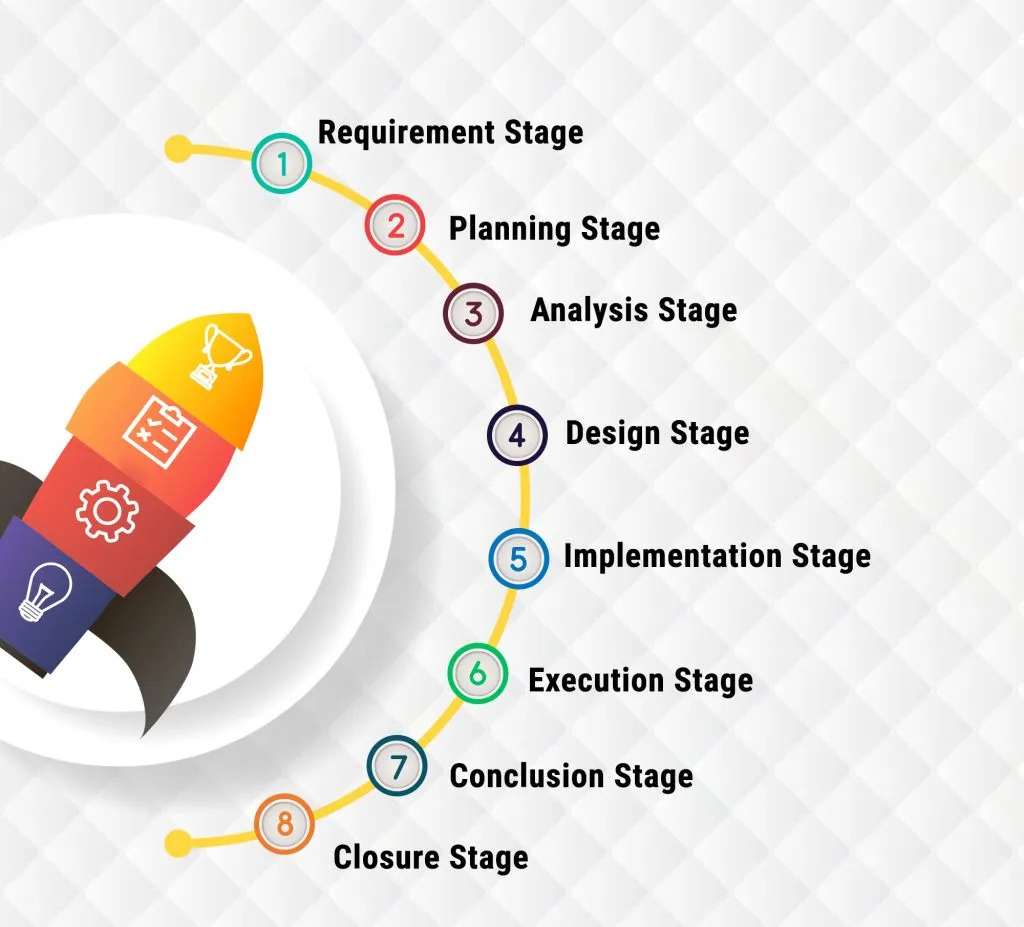8 different stages involved in a Software Testing Life Cycle
Blog: Indium Software - Big Data
What’s a Lifecycle?
A lifecycle in easy term denotes the series of changes from one form to another kind. These changes can occur to some tangible or abstract things.
Everything has a lifecycle from the beginning to end.
Similarly, the software can be also be an entity. The same as developing applications entails a sequence of measures, testing tool has measures that ought to be implemented at a certain sequence.
This process of implementing the software testing activities in a planned and systematic manner is known as testing life cycle.
What is Software Testing Life Cycle (STLC)?
Software Testing Life Cycle (STLC) is described as a succession of tasks conducted to execute Software Testing.
Falgship service offerings accomplished by jumpstart kits, integrated process & governance models
Read More
In contrast to popular belief, QA Software Testing Services is not a one-time task. It is made up of a collection of actions completed methodologically to assist revaluate your software product.
These are the stages of an STLC.

What is an Entry and Exit Criteria?
Entry Criteria: The prerequisite items have to be done before testing can start is specified as entry criteria.
Exit Criteria: It is defined as the items that must be completed successfully before the testing is signed off.
There are an Entry and Exit Criteria in all levels in the Software Testing Life Cycle (STLC).
1. Requirement Stage
In this stage of STLC, prerequisites are studied and analysed. Brainstorming sessions are conducted along with different teams and the goal is to discover whether the project requirements are clear or not.
This stage can help recognize the kind of testing. In case any attribute is not testable, discussions will be carried out through this stage so the mitigation strategy could be planned.
2. Planning Stage
Test planning should be the very first stage of a testing procedure in practical scenarios. In this stage, the team identifies the actions and tools that would help in testing goals.
During preparation, the team also attempt to spot the metrics, procedure of collecting and monitoring those metrics.
The planning is not done only with requirements.
Prerequisites do form one of the foundations but there are just two other essential elements that affect test planning. These are:
- Organization’s Test strategy.
- Risk investigation / Risk Management as well as reduction.
3. Analysis Stage
This STLC stage defines what exactly to be analysed.
The testing team essentially identify the evaluation requirements through the test requirements document and other evaluation basis.
There are several variables, which influence the identification of the test conditions:
- Depth and levels of testing
- SDLC involved
- Project risks
- The complexity of the software or product
- Knowledge and skills of the testing team
- Test management
- Availability of stakeholders.
We need to make an effort and write the test requirements in a thorough manner. Also, recognize the exit criteria of this testing, i.e. ascertain some states when you may stop the process.
4. Design Stage
This stage outlines how to design the testing process. This stage involves these tasks:
- Identify and receive the test information
- Describe and prepare the proper test atmosphere.
- Produce the test coverage metrics.
- Produce the requirement traceability metrics
5. Implementation Stage
This is the most significant task in the Software Testing Life Cycle stage is the development of comprehensive test cases.
Assessing the test instances additionally to find out which test case will be part of the regression suite.
Prior to deciding on the test case, it is crucial to perform the inspection to guarantee the precision of these test instances.
Also, do not forget to sign off from the test instances before actual implementation begins.
If your job involves test automation, then assess the candidate test instances for test automation and then continue for scripting the test instances. Do not neglect to examine them!
6. Execution Stage
As the name implies this is actually the STLC stage where the real execution occurs.
However, before you begin your execution, ensure your entrance criterion is fulfilled. Concurrently fill the traceability metrics to monitor your own progress.
7. Conclusion Stage
Depending upon your job and stakeholders selection, you can choose on coverage if you would like to send a daily report or weekly report.
There are various sorts of reports i.e., DSR (Daily status report) and WSR (Weekly status reports).
The content varies in these reports depending upon whom you are sending it to.
Is Your Application Secure? We’re here to help. Talk to our experts Now
Inquire Now
Is Your Application Secure? We’re here to help. Talk to our experts Now
If the project managers belong to analysing history then they’re more interested in the technical component of the project, so incorporate the specialized things on your document (number of test cases passed, failed, flaws raised, seriousness flaws etc.).
However, if you plan to send the report to upper stakeholders, then they may not be considering the technical matters so report them concerning the dangers, which were mitigated through the software testing process.
8. Closure Stage
In this final stage, these are the tasks for the final actions
- Check for the conclusion of the test. Check whether entire test cases are implemented or mitigated properly
- Check for severe defects
- Do meeting on lessons learnt and document it
The post 8 different stages involved in a Software Testing Life Cycle appeared first on Indium Software.
